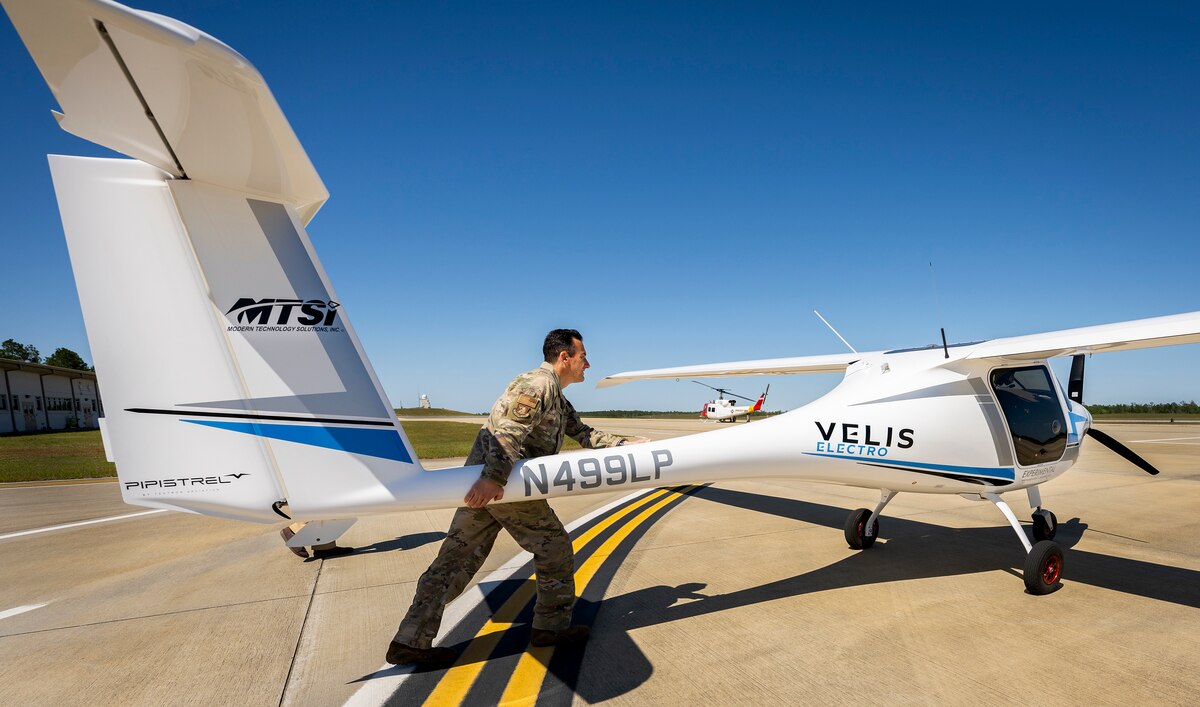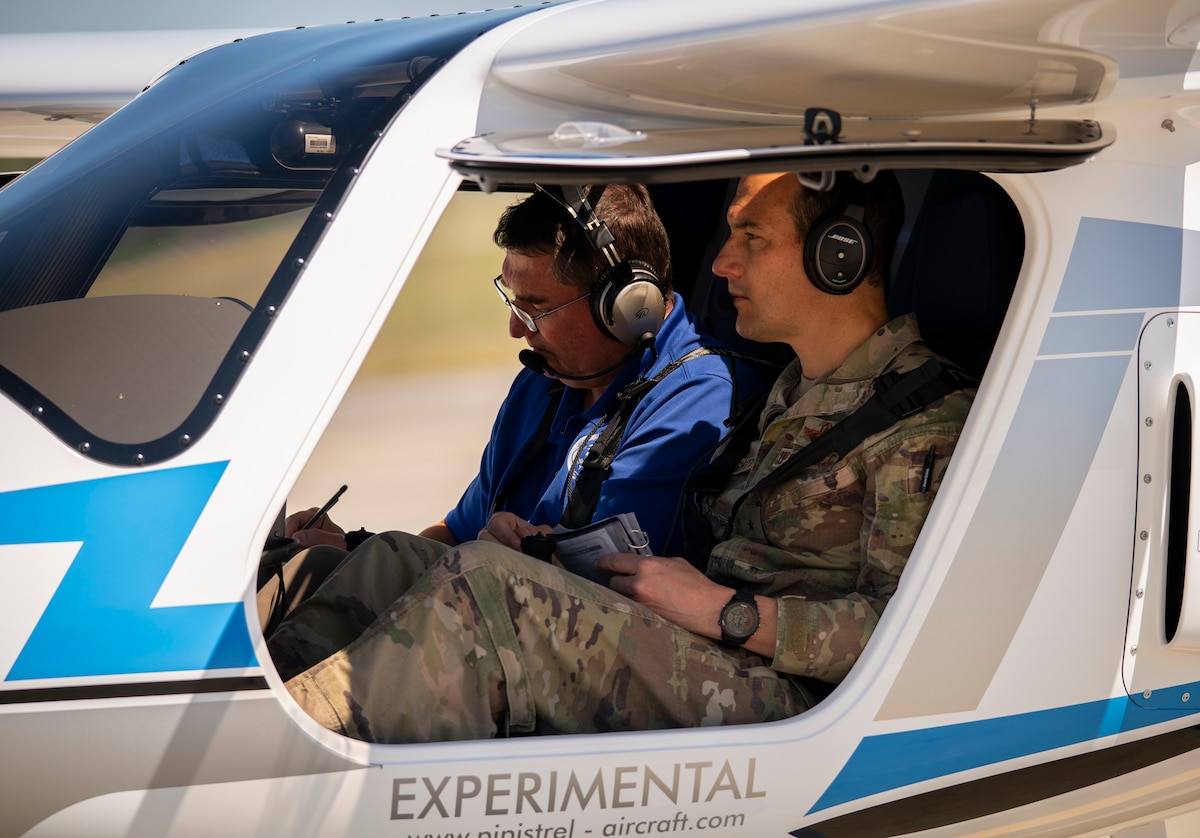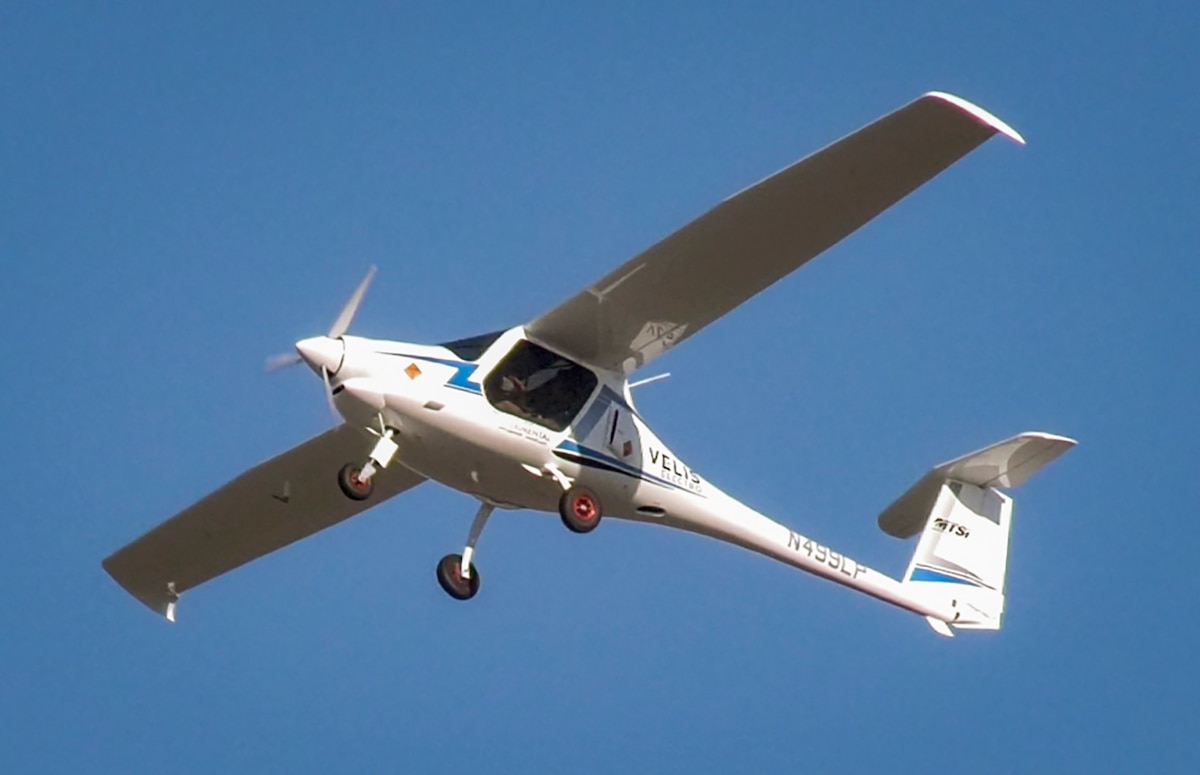After a quick taxi out to Duke Field's runway, Brig. Gen. Jeffrey Geraghty spun up the 21-foot, electric aircraft's 80-horsepower engine and zoomed forward. The Pipistrel Velis Electro quietly lifted off heading north as the sun dipped in the west around dusk April 22.
The 96th Test Wing commander was one of approximately 20 test pilot volunteers to try out the electric aircraft with the 35-foot wingspan during its three-week field trip to Eglin Air Force Base.
Geraghty complimented the aircraft, the quiet flight and how lightweight the Electro turned out to be. Instead of towing the 1,000-pound aircraft, Geraghty pushed it out to the flightline himself before the flight. He also added it was much easier to get in and out of than an F-16 Fighting Falcon to its list of benefits.
Geraghty, along with other Eglin AFB test pilots, flew the twin-seat Electro with an instructor for approximately 45 minutes each consisting of pattern work, area maneuvering, and stalls. Afterward, they provided specific feedback and observations about the flight called qualitative evaluations that drew from their unique test experience.
The information gathered from the QEs, which will happen throughout the year, will clarify and validate expectations about electric aviation usage.
These flights were part of another 413th Flight Test Squadron and AFWERX partnership. The 96th TW unit provided the location and logistics, while AFWERX funded the operation.
"Eglin offers a unique blend of airspace, test pilots, charging infrastructure, and prior electric aircraft experience that swayed a QE deployment to the Florida panhandle," said Lt. Col. John Tekell, AFWERX's Agility Prime lead.
AFWERX, the Air Force's innovation arm, has four different aircraft types it plans to deploy for QE analysis at various Air Force bases throughout this fiscal year to gather more QE data about electric airplanes.









